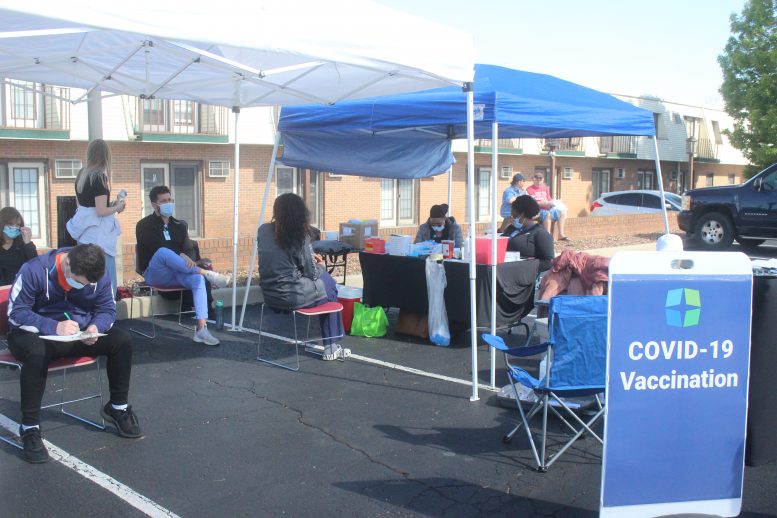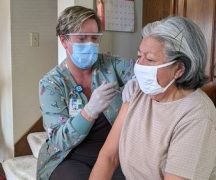By DAVID DUPONT
BG Independent News
Gov. Mike DeWine’s announcement earlier this week that the state’s health orders, including masks mandates, will be lifted on June 2 brought relief and a lot of questions.
Cathy Nelson, the president of the Wood County Health Board, said at Thursday night’s board meeting that she’s already gotten questions on how that will affect orders locally. Does this mean restaurant servers will no longer be required to wear facial coverings?
Health Commissioner Ben Robison said the governor leaves it open for businesses and organizations to make their own decisions. People’s understanding will vary on what the changes mean.
The Department of Health will provide guidance on how “they can keep themselves safe while helping the economic recovery,” he said.
“It’s going to be hard for any business after state mandate is gone to mandate masks,” said Dr. Thomas Milbrodt, a board member. He also noted that the CDC is saying masks are not needed for those who are vaccinated.
Robison said case counts are moving in the right direction, but still have not fallen to the 100 case mark. Northwest Ohio, he said, has some of the highest case counts in the state. That’s due in part, he said, to its proximity to Michigan, which has higher case counts.
But, Robison said, he’s also seen mapping data that shows more cases in Lucas County, but fewer in Wood County, especially the northern end where vaccination rates are high.
Perrysburg has a 75-percent vaccination rate. It’s like the outbreak hits a wall there, Robison said.
Those high vaccination rates, though, don’t hold for the entire county where the rate can be as low as 21 percent.
Overall 47 percent of the county’s population has been vaccinated. That’s 57 percent of the eligible population.
That eligibility has also expanded to now include those 12 to 15. According to news shared at the meeting youngsters in that age group were vaccinated earlier in the day at the Perrysburg Famers Market.
Robison said that he was hoping some would be vaccinated at clinics being held Friday at BG Middle School and Lake.
The most vulnerable population, those 65 and over, have an 87 percent vaccination rate, and that has resulted in a decline in the most serious cases.
With “a pretty substantial drop off in demand” for vaccines, the department is trying to reach out to encourage people to get vaccinated and provide as many opportunities as possible, Robison said.
In the past month the department has offered 23 events including vaccinations at the Bowling Green Farmers Market, as well as coordinating with Lucas County to provide vaccinations. That included a marathon 42-hour long clinic.
Robison said 100 people took advantage of the walk in clinic at the Board of Health offices, 1840 E. Gypsy Lane, this past Monday. Those clinics are held Monday from noon to 6 p.m. The department is also seeking out other locations to hold regular clinics.
While the governor has created some incentives like drawings for $1 million or free college tuition, the real incentive is for the benefit it offers to individuals who get vaccinated. It protects them and keeps them from spreading the virus to others.
On Mother’s Day Robison said he was able to hug his mother for the first time since Christmas, 2019.
Robison said there has been talk about whether a booster for the COVID vaccinations will be needed. This has mostly been posited by the drug manufacturers. At this point the vaccines are said to have six month efficacy, but that’s only because that’s the extent of the experience.
Still the department will start looking at the possibility of providing the boosters starting on Oct.1. “That’s a planning time frame,” he said. “We don’t know if they’ll be needed or when they will be needed.”
Robison expressed concerns about Ohio Senate Bill 22.
The bill was drafted to limit the governor’s authority to issue and enforce health orders. Amendments have been added, he said, to restrict the powers of local boards of health to issue health orders.
He said he’s asked the county prosecutor to review the legislation and advise the board.
This made be “theoretical,” Robison said, but it’s important for the board to have a clear understanding of what they may face so they can move forward.
The bill was co-sponsored by both State Sen. Theresa Gavarone and State Rep. Haraz Ghanbari.





